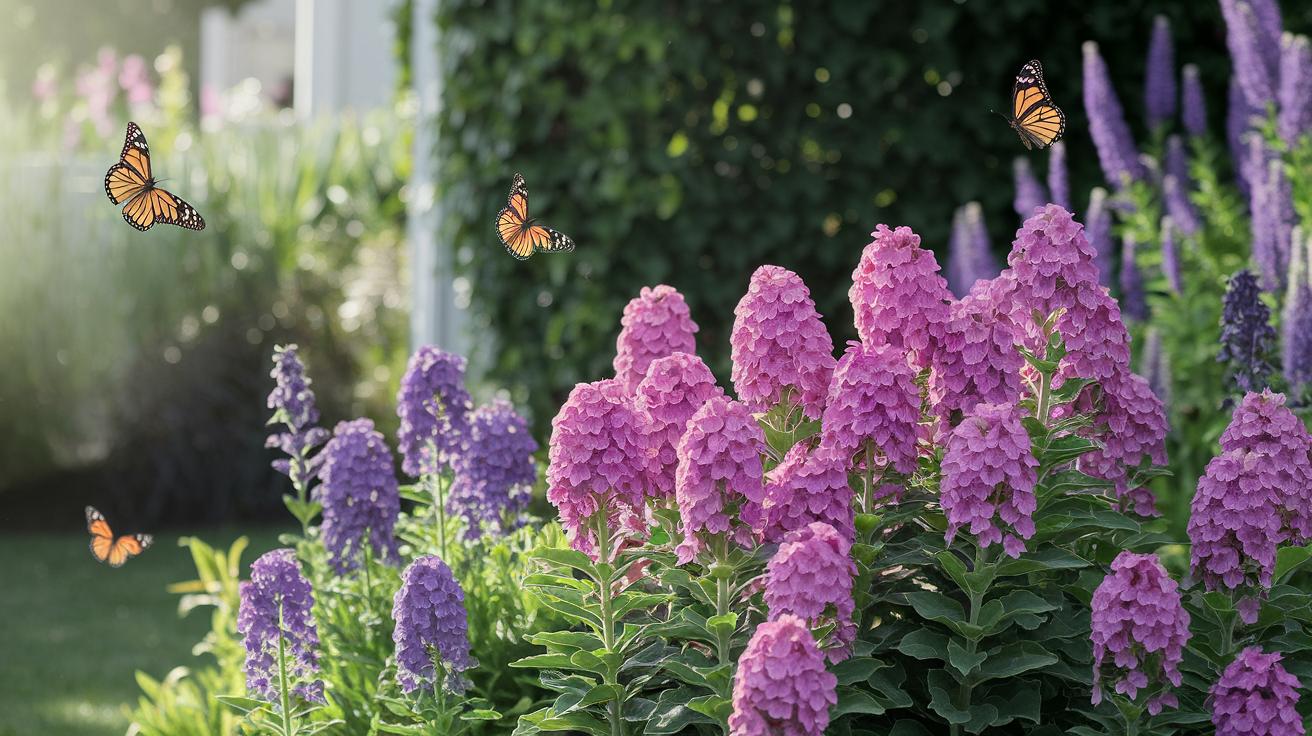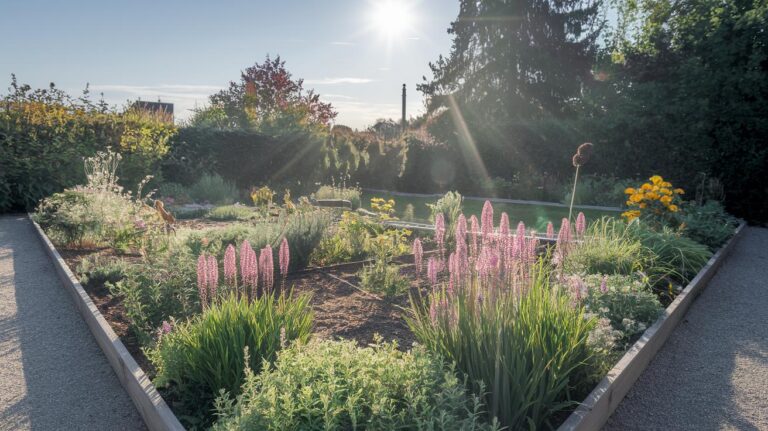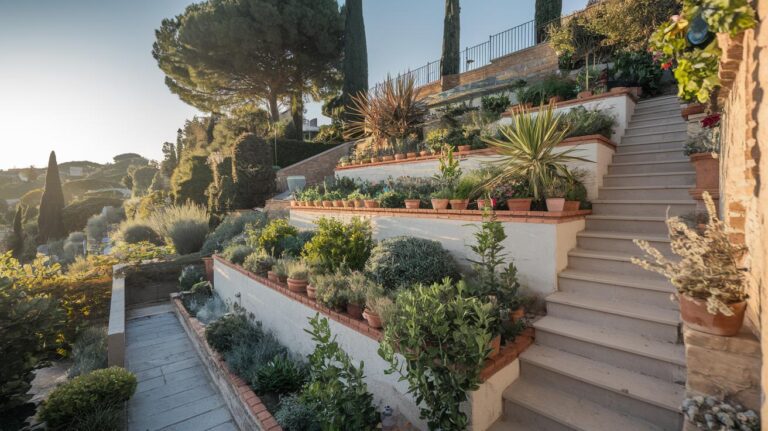Low-Maintenance Perennial Flowers Awesome Seasonal Stars
Think perennials (plants that return every year) are fussy divas that need your care all season? I used to think that too. Then I met a few garden heroes that shrug off dry spells and burst into bright blooms. They stand tall under the warm sun, their petals dancing in the breeze.
These no-fuss flowers let you lean back on the porch with a cold glass of lemonade. Oops, I once forgot to water mine for a week. Yet they still fill your yard with color and bring the soft hum of busy bees.
They barely need deadheading (snipping off faded blossoms) or fancy soil rich in compost (broken-down yard scraps that feed plants). Just tuck them into loose earth and watch them go.
They are your secret to a happy garden without a ton of sweat. Plus more time to munch fresh basil on the porch. Yum!
Top No-Fuss Perennials for Easy Gardening
I’m all about perennials (plants that come back each year) that don’t need much fuss. These garden pals settle into regular soil and keep your yard smiling with color. Oops, I almost forgot. They barely need deadheading (pinching off old flowers) or special treatments.
They thrive in well-drained soil (soil that doesn’t stay soggy) and um, shrug off dry spells. You’ll spend more time admiring blooms and less time lugging a watering can. By the way, I once found a busy bee napping inside a flower. Back to the plants.
You’ll see silvery spikes of Russian Sage lighting up sunny corners.
Autumn Joy Sedum shows off pink clusters that pollinators adore.
Daylilies burst into bright color early in summer.
Black-Eyed Susans beam golden yellow like mini suns.
Hostas fill shady spots with lush leaves that feel cool and soft.
Coneflowers (Echinacea) draw bees and butterflies year after year.
Planting these now sets you up for a summer full of color.
| Perennial | Light | Soil | Water | Bloom Time | Pest Resistance |
|---|---|---|---|---|---|
| Russian Sage | Full sun | Well-drained | Low | Summer | High |
| Autumn Joy Sedum | Full sun | Poor to average | Low | Late summer | High |
| Daylilies | Sun to part shade | Well-drained | Moderate | Early summer | Medium |
| Black-Eyed Susans | Full sun | Average | Low | Summer | High |
| Hostas | Part to full shade | Moist, rich | Moderate | Summer | High |
| Coneflowers (Echinacea) | Full sun | Well-drained | Low | Midsummer | High |
Site Selection: Sun Exposure and Soil Needs for Easy Care Perennials
Have you ever planted a new flower only to watch it sulk? That usually means the spot isn’t right. When your perennials get the right sun and soil, they settle in quick. Then you’ll see more blooms and worry less about soggy roots or scorched leaves. Oops, I once skipped a soil test and watched my daisies droop all season. Don’t let that happen to you.
Full Sun Friendly Perennials
Full sun is like a sunny breakfast nook for plants, about six to eight hours of bright light. Russian Sage stretches silvery spikes toward the sky. Autumn Joy Sedum dives into sandy, well-drained soil and pops out rosy clusters. Coneflowers soak up rays and turn bees and butterflies into regular visitors. Lavender? It’s happiest in dry dirt and clear blue skies.
- Russian Sage
- Autumn Joy Sedum
- Coneflowers
- Lavender
Shade Tolerant Varieties
Too much midday heat can shrivel leaves. Part to full shade gives a cool break for plants that like it darker. Hostas roll out lush green leaves in shady corners. Astilbe perks up near a drip line or pond edge with feathery flower plumes. Heuchera americana lights up dim spots with tiny blossoms. And Pulmonaria saccharata wears spotted leaves like a little garden party. Need more ideas? Check out shade ideas for backyard for cozy, green retreats.
- Hostas
- Astilbe
- Heuchera americana
- Pulmonaria saccharata
Soil Preparation Steps
Happy roots start in happy soil. First, test your soil’s pH (how sour or sweet it is). Then work in compost (decayed organic matter that enriches soil) so clay holds air better and sandy patches drain well. If your ground stays soggy, build small mounds or a raised bed to keep roots from drowning. For acid-loving plants like azaleas, sprinkle garden sulfur a few weeks before planting.
- Test pH
- Add compost for better drainage
- Build mounds or raised beds to avoid waterlogging
- Adjust pH with sulfur for acid-loving plants
Watering and Feeding Strategies for Low-Water Perennial Plants
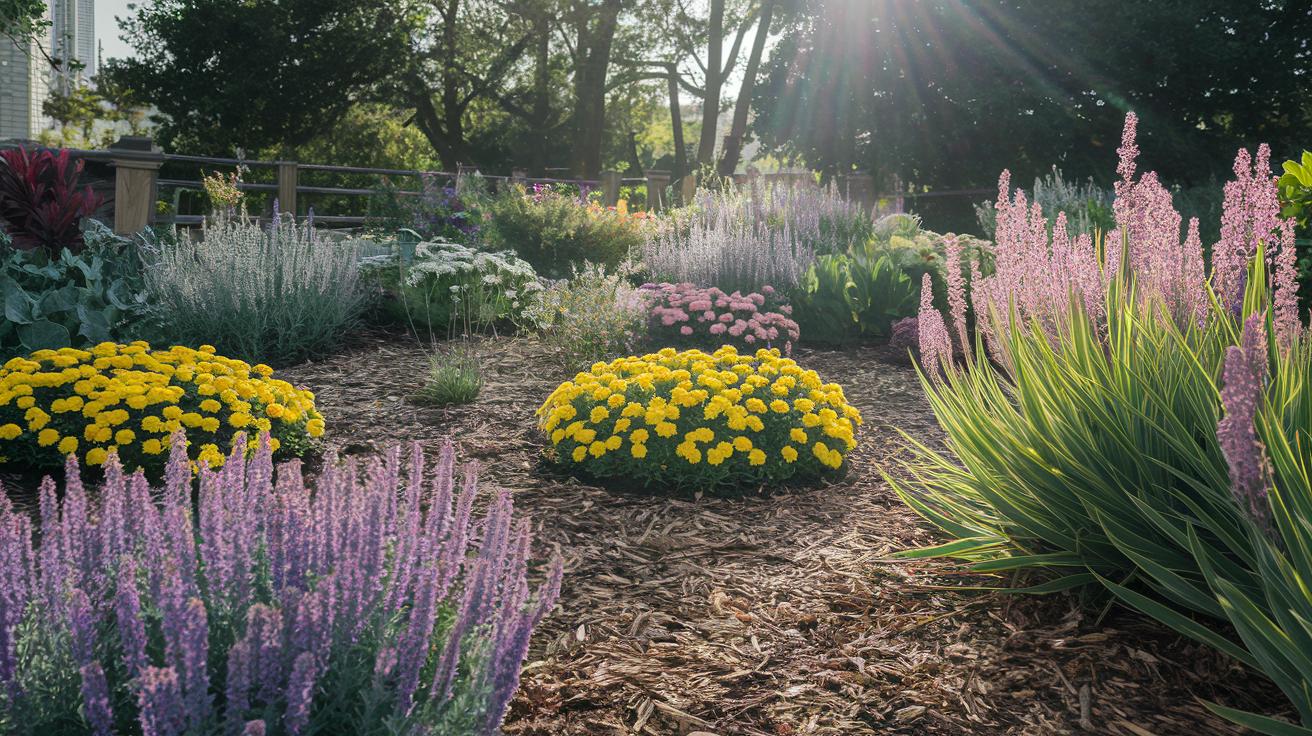
So you just planted low-water perennials (plants that come back each year). For the first three months, give them a deep drink once a week. Let water soak until soil feels damp five or six inches down. Sprinkling the surface doesn’t cut it. Roots need that good soak.
After month four, switch to a big drink every three to four weeks during dry stretches. Think of it like a refreshing splash that keeps them bright when summer sizzles. By the way, my cat loves sunning on the raised bed. Back to watering.
Succulents like Sedum and Russian Sage (plants with water-storing leaves) barely need fertilizer. They settle in just fine without extra feed. But heavy feeders (plants that crave nutrients), such as Astilbe, shine after one slow-release feed (fertilizer that releases nutrients over time) in early spring.
In spring, spread two to three inches of mulch (a soil blanket that holds in moisture, tames weeds, and cools roots). It’s like tucking your garden in for a comfy, hydrated season.
One easy plan:
- Weekly deep watering during season one.
- Monthly deep soaks once roots are settled.
- Early-spring slow-release feeding for heavy feeders.
- Fresh mulch each spring.
Stick to this routine and your drought-tolerant perennials will reward you with steady color all season long.
Designing with No-Fuss Perennial Blooms: Containers, Borders, and Beds
Hey neighbor, let’s layer your perennial (plants that come back year after year) bed like a party. At the back, set tall stalwarts like False Indigo with its pea-shaped blue flowers reaching for the sky. Next to them, Coneflowers (Echinacea) stand tall like sunny guards bees can’t resist. Together they make your garden sway in the breeze.
In the middle, plant daylilies, Echinacea, and Salvia for mid-height color and texture. Their petals and leaves mix like a friendly crowd, each one taking a turn to shine. Plus, hummingbirds and bees will zip around you with their tiny wings humming.
To edge the border, spread creeping thyme or creeping phlox. These groundcovers (plants that spread low) form a soft carpet along stones and hug the edge. By the way, my cat naps on the thyme, it’s her favorite sunny spot. Then, you’ll have a neat, inviting fringe.
If you’re working with pots, choose sedum, lavender, or Nepeta. Fill each pot with a well-draining potting mix (soil that lets water flow through) and place them on a sunny porch or balcony. They’ll reward you with blooms that glow in small spaces.
For a final touch, tuck in some silvery foliage like Coreopsis or Russian Sage. The gray-green leaves make bright flowers pop. Want more design ideas? Check out low maintenance landscaping.
Low-Maintenance Perennial Flowers Awesome Seasonal Stars
Spring is all about snipping away the old bits on Siberian Iris (that purple flower popping up each spring) and Lupinus polyphyllus (tall lupine with clusters of pea-like blooms). Once the petals drop, I just clip off the wilted leaves and stalks. The warm earth feels so fresh after clearing away last year’s growth.
By summer, easy-care plants like Echinacea (cone-shaped daisy) and Gaillardia (bright blanket flower) only need a quick deadhead now and then. I pinch off spent blooms and before I know it, new petals are unfolding, sometimes I even get a surprise second show in July.
Fall brings golden Helenium autumnale (sneezeweed) and asters (late-bloom daisies). After the first frost, I trim their stems but always leave the dried seed heads for birds. My backyard chickadees go nuts for those tiny seeds.
And every three to five years, I split clumps of daylilies (easy lilies that open each morning) and hostas (shade-loving leafy plants). Just dig up the whole clump, pull it apart, and replant. Your beds feel roomier and the roots stay happy.
A quick spring-to-fall chore list:
- In spring, remove old leaves and flower stalks.
- In midsummer, deadhead spent blooms sparingly.
- After the first frost, trim back stalks but keep seed heads.
- Every 3–5 years, divide crowded clumps.
Gardening doesn’t have to be a daily grind. Grab a cold drink as you work. Gardening can be a mini getaway. Back to those blooms…
Troubleshooting Low-Maintenance Perennial Gardens: Pest and Deer Resistance
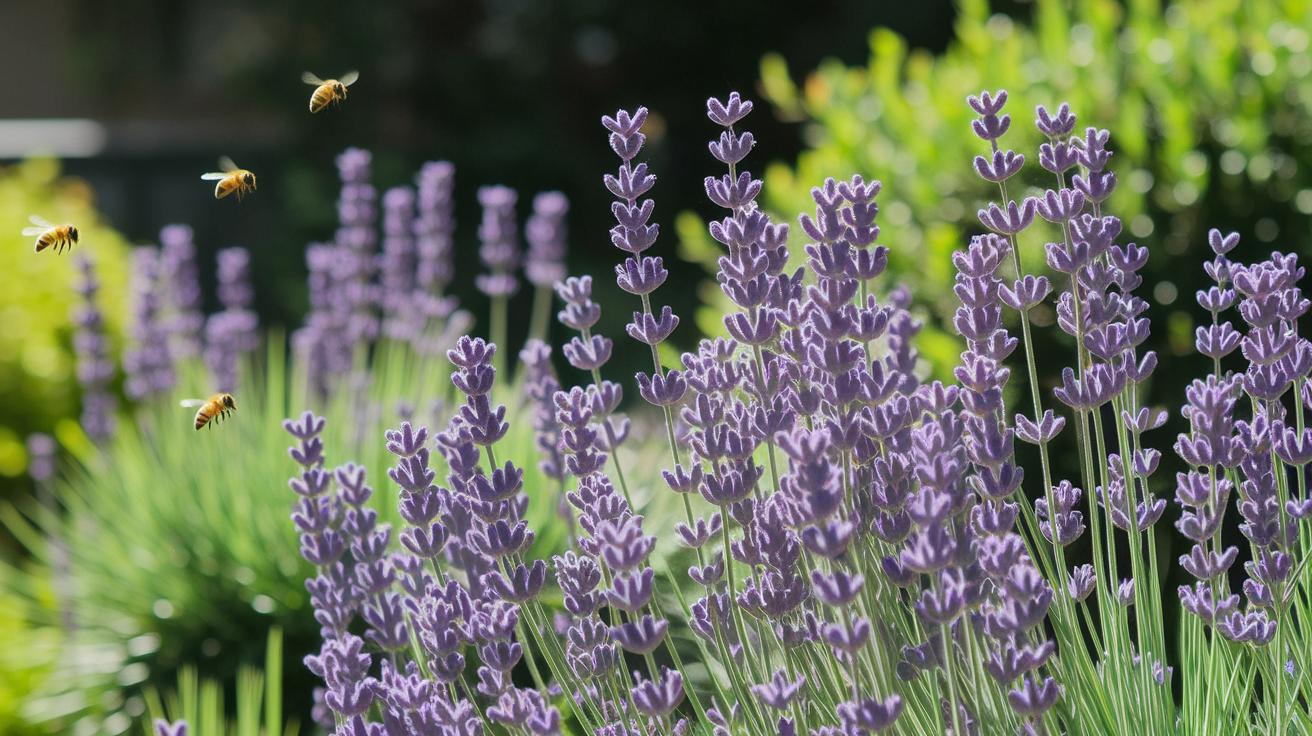
Have you noticed tiny green aphids feeding on your Echinacea petals? Try giving the blooms a gentle rinse with your hose or misting the leaves with insecticidal soap (a mild spray that targets soft-bodied pests). The little suction cups on those aphids can’t handle a steady soak, so they’ll tumble away without harsh chemicals.
But when deer wander through your yard they can nibble on your tender blooms. Scatter lavender, culinary sage (Salvia officinalis), or catmint (Nepeta faassenii) among your perennials. The strong, fresh scents usually send deer packing so your flowers stay intact.
Soggy soil is a silent villain that leads to root rot. I like building raised beds or stirring compost (decayed organic matter that enriches soil) into heavy ground so water drains off instead of sitting. Water only when the top inch feels dry, think of your soil like a sponge: squeeze, moisten, then fluff it up before you plant.
Unwanted weeds sneak in and steal water and nutrients from your perennials. Spread a thick layer of mulch (a soil blanket that keeps moisture in, tames weeds, and cools roots) around each plant. If you see a weed poking through, pull it out before it drops seeds. Easy as that.
Some perennials self-seed and pop up in random spots next spring. I like to pick native, non-invasive varieties so I’m not chasing sprouts every weekend. Then I can sit back, sip iced tea, and enjoy the blooms without extra chores.
Final Words
We wrapped up our tour of no-fuss perennials, site selection basics, and simple watering tricks. From silvery Russian Sage to cheerful Black-Eyed Susans, you’ve got a clear table of blooms to pick from.
Design tips for beds, containers, and seasonal care steps make life easier. Troubleshooting deer, pests, and root rot keeps your patch happy.
Now you’re ready to bring in color and ease. Enjoy watching those low-maintenance perennial flowers thrive with minimal effort!

